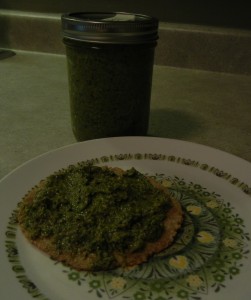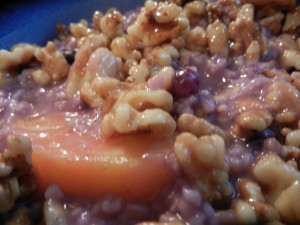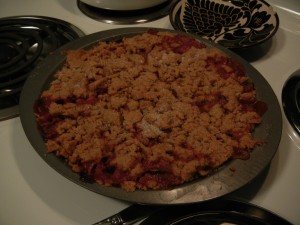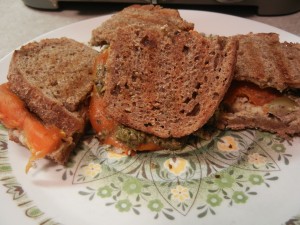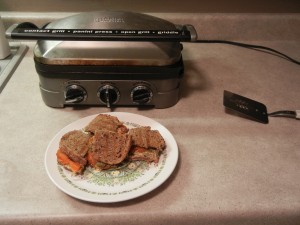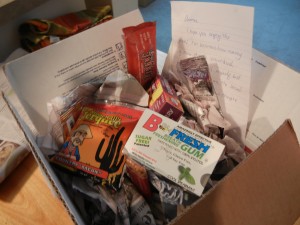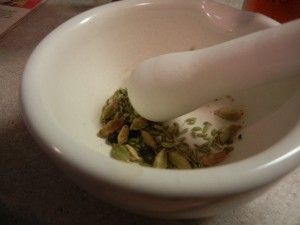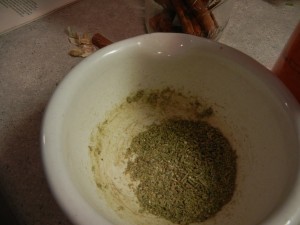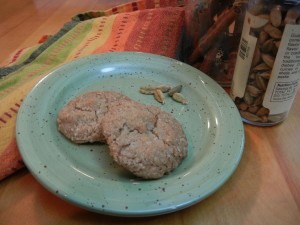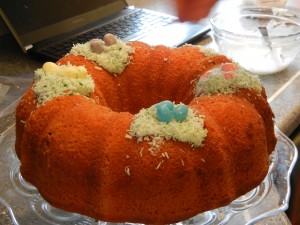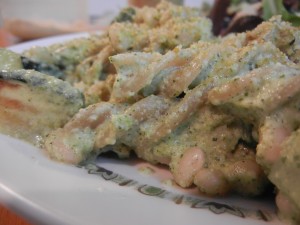When I can get my hands on lots of good basil, I like to make a big batch of pesto to keep on hand. As long as you don’t mind brown or make sure to keep the air out, pesto keeps just fine and works well on sandwiches or to make a quick meal with pasta. This rich pesto is shown here on a homemade tortilla. It’s also good on fingers.
Ingredients
1/2 cup walnuts (or whatever seed or nut you have on hand)
10 cloves garlic
3 small bunches fresh basil or about 5 cups. I use the stems, too, if they aren’t too woody
1 teaspoon salt
1 teaspoon freshly ground black pepper
1 cup nutritional yeast
1/2 cup olive oil
1/2 cup hemp seed oil
Measure your oils into the same measuring cup, set aside. Add all other ingredients to food processor and process until paste forms. You may need to help it along, but it seems quickest to just put it all in at once instead of chopping things up separately. Slowly drizzle oil into processor bowl while processor is running. Use immediately or pack the pesto into a jar. You can store this in the freezer or fridge, but either way, if you don’t want a small layer of brown pesto (which seems to me to just be an aesthetic thing), make an air barrier with either plastic wrap (press it right into the pesto) or oil. If you’re freezing it, you could even get fancy and freeze it in an ice cube tray and then remove the pesto cubes to a bag once they are frozen.

